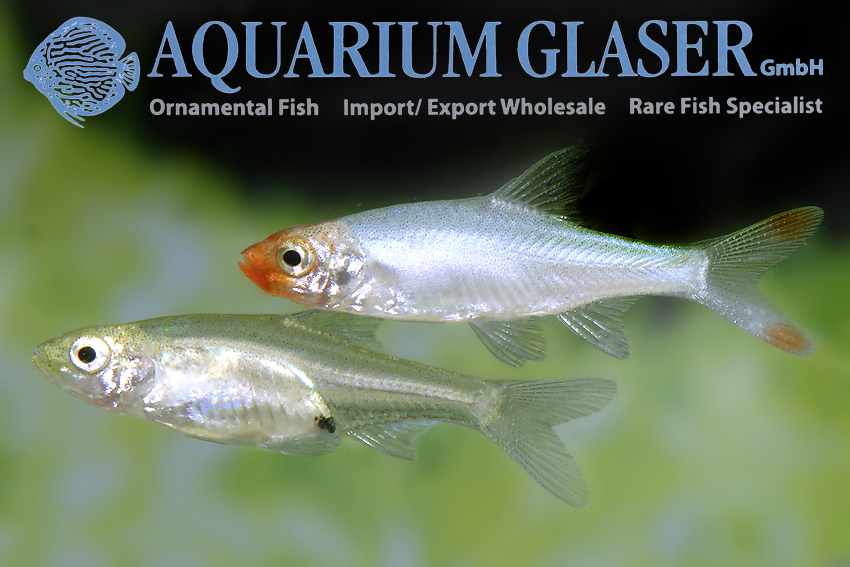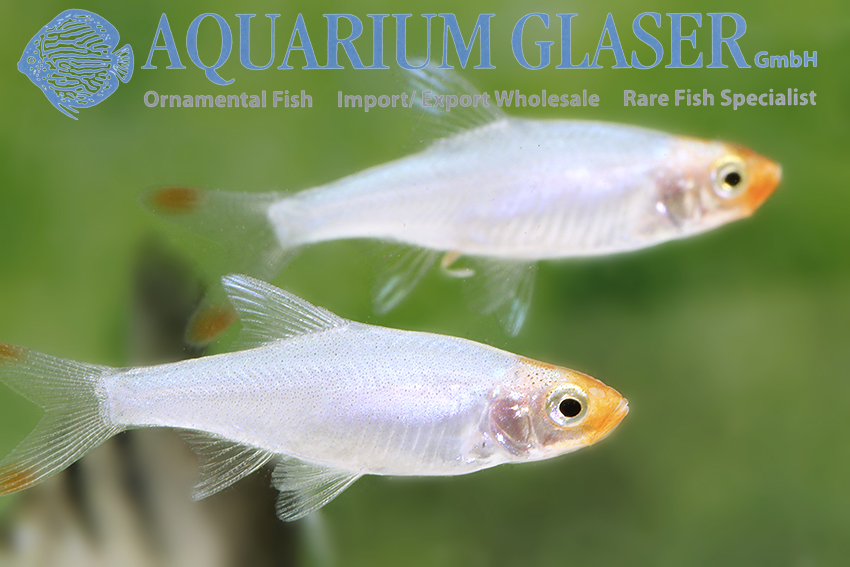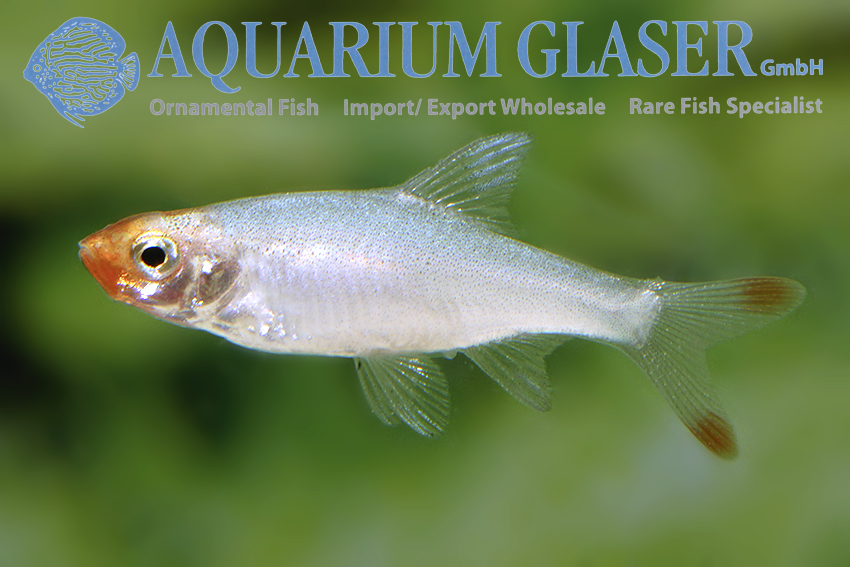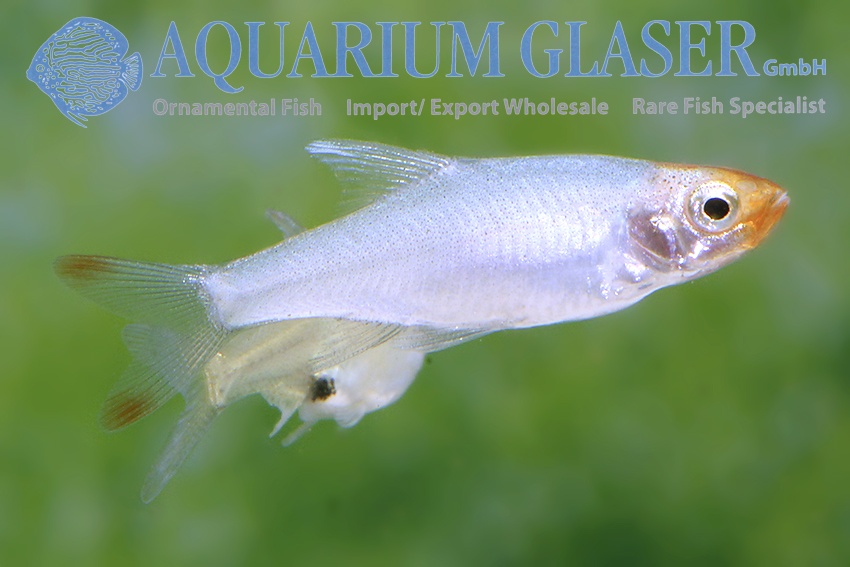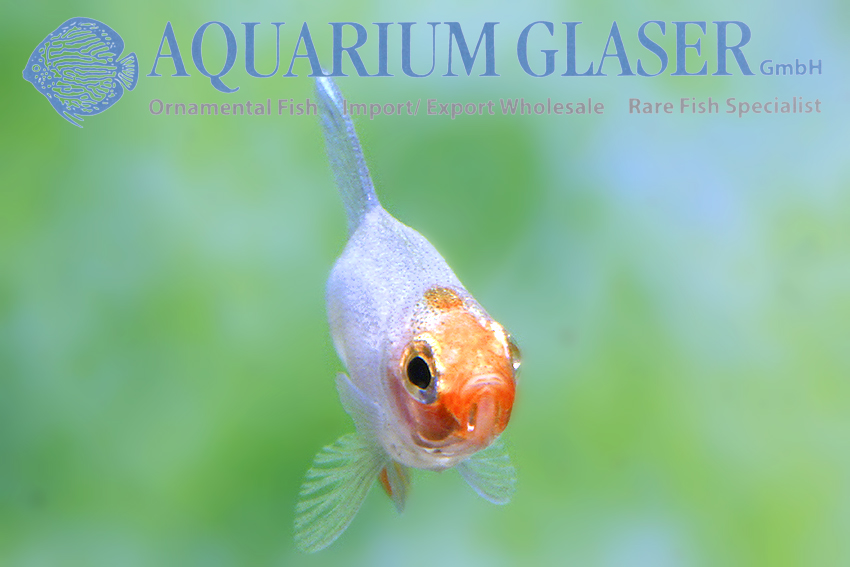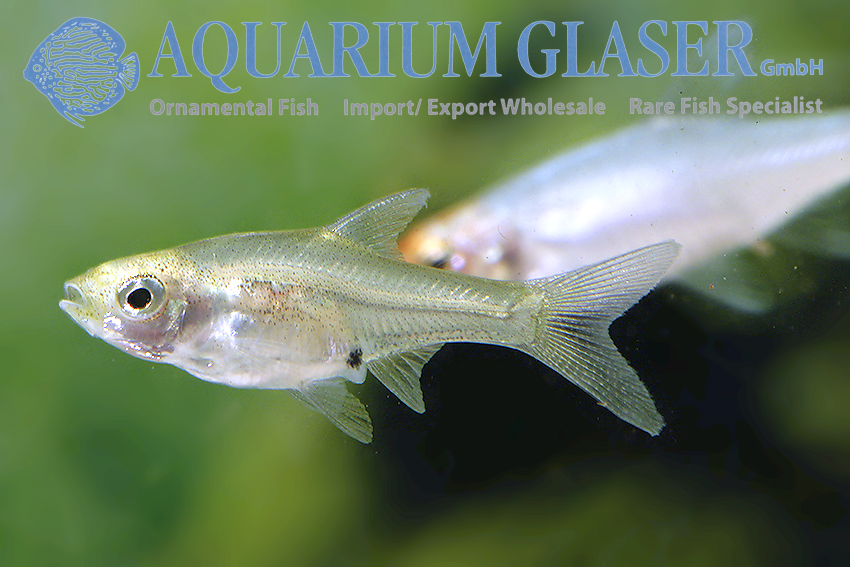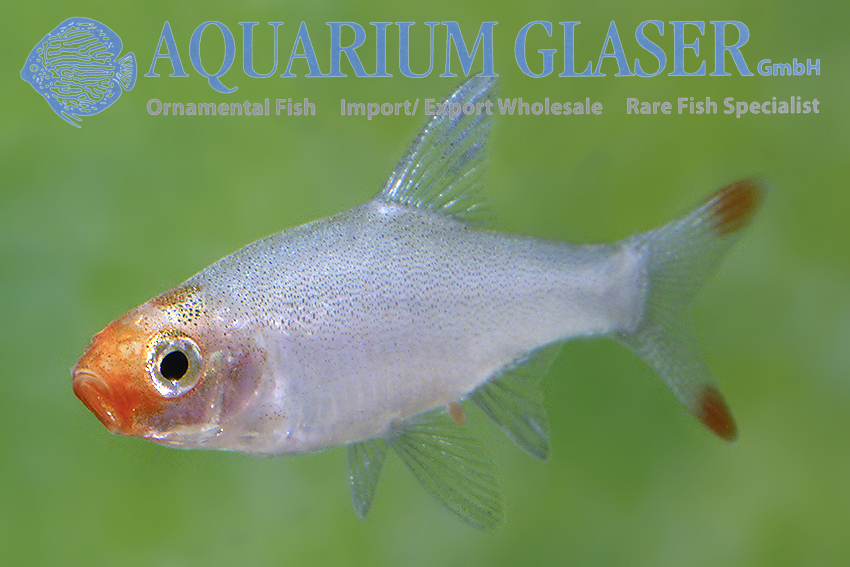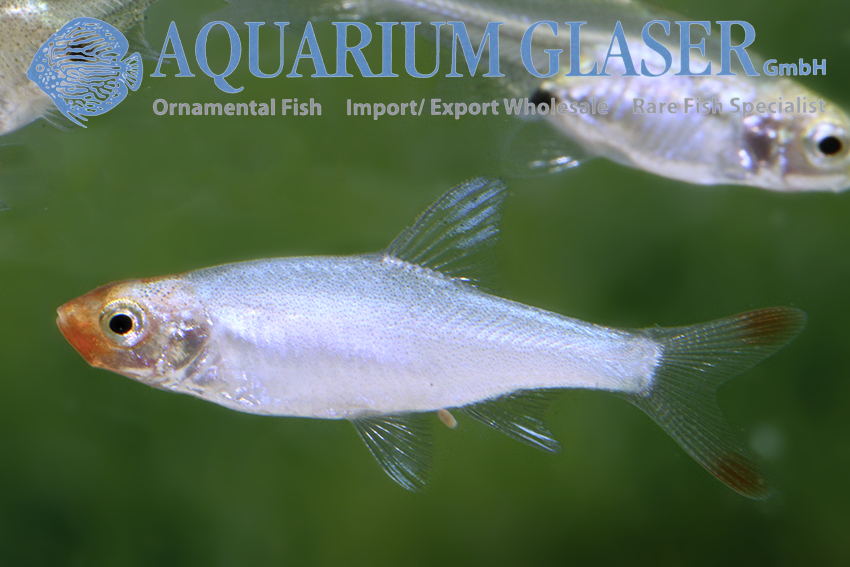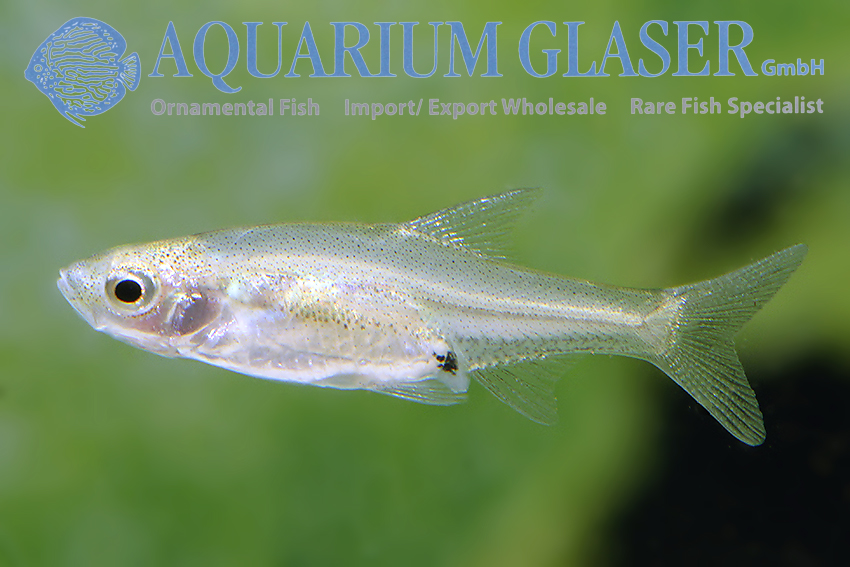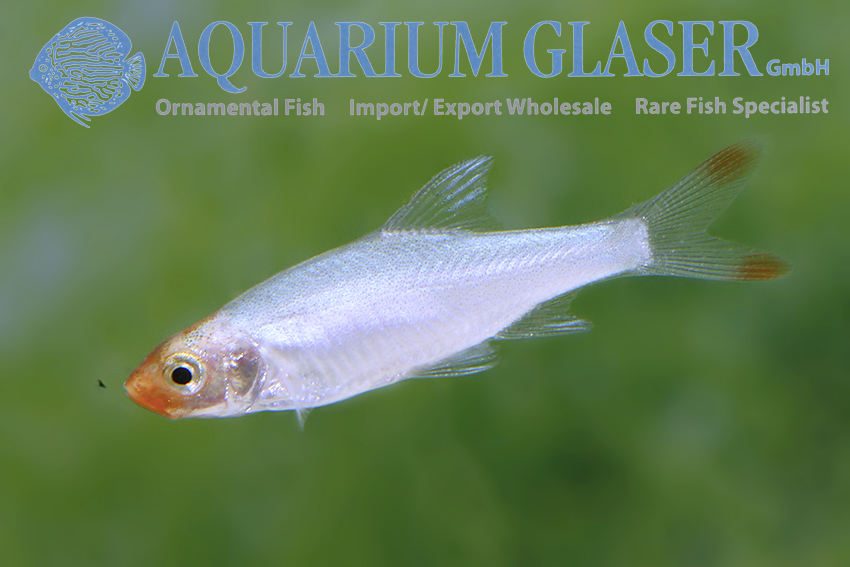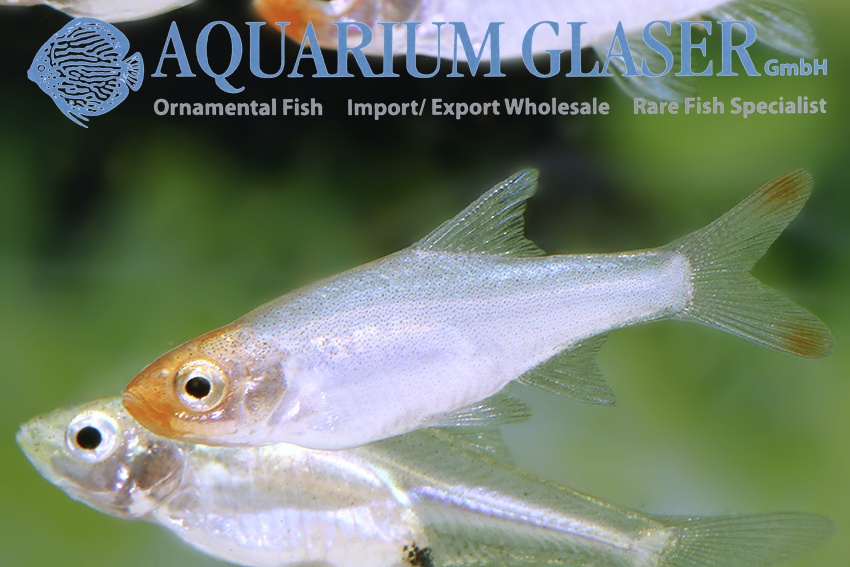Lake Inle in Burma is a mountain lake located on the Shan Plateau about 900 meters above sea level; it is about 65 km long and 10-22 km wide. The water is relatively hard (12-17° GH) and in February the water temperatures drop to 14-18°C. Lake Inke is world-famous for its human inhabitants, whose entire life is completely focused on the lake. They live in villages built on stilts and practice agriculture on floating meadows. For aquarists the lake is especially interesting because of the many endemic small fish species, which are only found there.
One of them is Sawbwa resplendens, which is also called “Naked Microrasbora” because it has no scales – which is very rare among carp fish. In former times S. resplendens, which is nowadays also available as “Asian rummynose”, was a sought-after rarity, today it can be regularly purchased from Indonesia as offspring.
The maximum length of the species is 4-5 cm, mostly it stays 1-2 cm smaller. Males and females look completely different, only the male has a red head and the red spots in the caudal fin. The body of the males has a blue-green shine, the females are beige. And even very young animals can be distinguished quite well, because the females have a strong black spot directly above the anus, as we know from Microrasbora species.
Indoor aquariums for Sawbwa resplendens (there is only one species of the genus) do not need and should not be heated, water temperatures above 24°C are unhealthy for the fish. The peaceful animals prefer to live in a school (10-20 specimens) with their own kind. They can be kept along with all other peaceful fish with similar demands, even most tender plants leave Sawbwa in peace.
The spawn-behavior is quite unusual, the animals spawn in surface-proximity at the underside of broad-leaved plants. The rearing of the young is difficult, because although they are comparatively large, they can eat only finest food (infusoria, rotatoria). If no adequate food is available, only a small percentage of the fish survive the first 10 days until freshly hatched Artemia nauplii can be taken. If nutrient-rich rotifers (rotatoria) are available, this period can be shortened to up to four days.
For our customers: the animals have code 454002 on our stocklist. Please note that we only supply the wholesale trade.
Text & photos: Frank Schäfer





